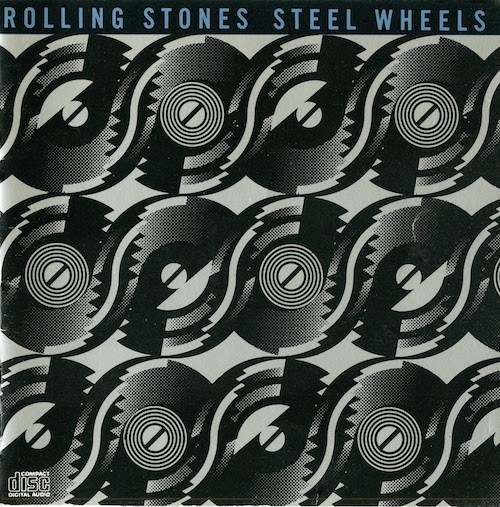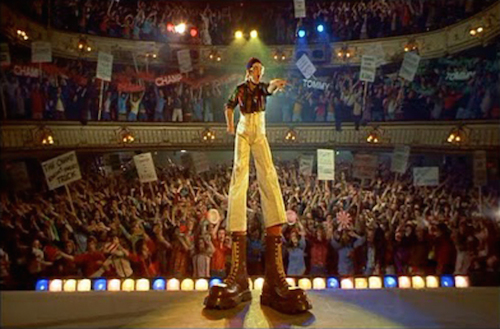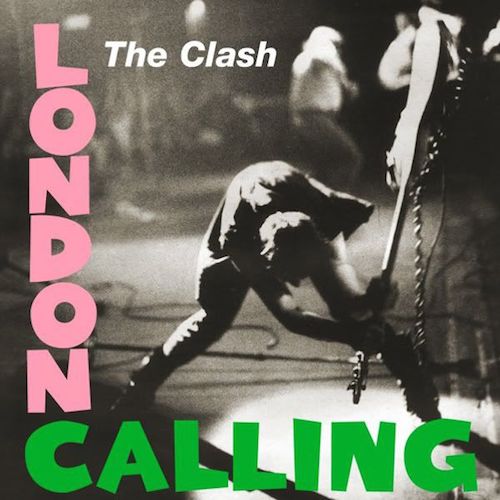
Why do bands break up? Why is the breakup (and inevitable reunion) such a durable pop trope? Is it part of the essential disposability of culture under capitalism? That groups should fade, creating the illusion of movement and renewal, while the system that produces them grinds on more or less unchanged?
Or is there something about the genre itself that makes over-40 and Top 40 feel inimical? Even bands that manage to stay together—The Mekons, U2, The Rolling Stones, The Cure—tend to conform to the pattern, early work better than late. Or, more exactly, early sets the standard for late, the bubble in the level that measures deviation and return to form.
I don’t listen to pop the way I used to because of the tyranny of the early; I’m let down by the genre’s incapacity for “late style.” I first came to the notion through Theodor Adorno’s 1937 “Late Style in Beethoven,” published in the green of his thirty-fifth year. Poor Adorno, so wrong-footed with all things pop, charted early with this six-paragraph toe-tapper, which contains many of his later themes in embryo. Think of it as his “Pinball Wizard,” the longer works the concept album he elaborated around it.

If you’ve read the piece, you’ll remember Adorno compares late works to “ravaged” fruits, furrowed, spiny, and tart. He argues against the Romantic notion of “lateness,” reaching back at least to Goethe, in which the peculiarities of an artist’s last works signal an “uninhibited subjectivity,” sublimely free from the conventions of the age. Late work, in this punky view, kicks down form to become a “document” of the personality breaking through the suave symmetries of artifice “with the sovereign self-assurance of the spirit liberated.” Think Prospero/Shakespeare snapping his staff, or the rock god smashing his guitar.

Adorno rejects this heroic take on lateness, which favors psychology and gesture over the work’s formal structure. You might say he’s less interested in the smashing than in the noise guitars make as they’re being destroyed. And what he hears in the feedback from Beethoven doesn’t jibe with the attributes you’d expect of late style. It’s “expressionless” and “distanced” where we should find transcendence, “serene” and “idyllic” where Romantics wanted fist-pumping triumph. (It’s one of Adorno’s insights that simplicity, if not sweetness, is a feature of late style, less Never Mind the Bollocks than Nirvana Unplugged.)
What I like most in Adorno’s essay—and where I find the clearest connection to poetry—is his treatment of trope, cliché, and convention in late works. Here, too, he’s out to set the Romantic punks straight. They’d wanted liberation from form; subjectivity released in its final moment from the constriction of art. Where Adorno hears in late Beethoven a superfluity of forms, forms untransformed by any struggle to work them into larger schemes of the composer’s own devising, or stamp them with his original genius. “The conventions” in late Beethoven, he argues, “find expression as naked representation of themselves.” Snatches of fugue announce themselves as fugue, arias as arias, trills as trills, without development or elaboration. The formulaic passages Adorno hears in the last pieces are abbreviated and profoundly uncreative, not the mark of personal expression but a “splintering off” of subjectivity as it evacuates the work of art.
If this is all sounding very postmodern—death of the author, play of signifiers, magpie appropriation, cult of the fragment—well, that’s part of the wonder of Adorno’s early hit, going electric while everyone else plays swing. The difference is that for Adorno, Death is the great subject of late style, not the end of master narratives or a centerless bricolage. The “splintering” in Beethoven’s last works, with their “fragments of convention,” Adorno reads as the “formal law” by which death comes to be registered in a work of art. Since art can’t die like organic things do, it’s a faulty device for recording death’s impression. The artist can only hope to catch it through his own “disappearing” from the work, a process Adorno hears in the spiky discontinuities of late style.

Once I pulled my head up from Adorno, I found a whole literature on lateness, Edward Said to Steve Evans, whose own recent questions about late style—is it just a guy thing? Worth listening for anymore? Out of touch with our new aesthetic categories?—leave a lot to think about. On the face of it, it’s not surprising the idea of late style should be unfashionable. That’s part of its job, and maybe its prime appeal: to be out of step, athwart its time. By definition, it’s always too late for late style.
But late style’s problems may run deeper. The concept depends upon an organic metaphor of growth and development that we increasingly have less time for. “Early/middle/late” is getting hyperlinked out of existence, just like records have lost their Side One and Side Two. The “vertical” reading practices that plot an author’s progress from juvenilia to grand valedictions compete with an ever more insistent “horizontal” interpretive tug, where filiation and filament eclipse root and crown. We’re more engaged right now, it seems to me, with the forest than the tree, attuned more to eco-systems than spiny fruits.
The gains from these new ways of reading have been immense. Like clearing away the dinosaur notions of genius, the avant-garde, and (most recently) creativity itself—all of which got scouted, signed, and emptied long ago by the corporate suits—putting “late style” to bed makes space for alternative notions of the poet and her cultural role that play more easily on our current devices. Dropping late style, as a concept, is a little like Joe Strummer shouting “No more guitar heroes!” in the middle of “Complete Control”—a gesture at once liberating, oppositional, ironic, and euphoric.

Still, I’ll miss late style if it disappears. I like it for its contrariness. I like its dottiness and crankiness, its refusal to toe anyone’s line. I like the idea of writing through art until you arrive at the artless. And in a culture that hopes to die before it gets old, I like late style’s always-untimely concern with death, which may be the great subject of living as well as of art.
In darker moments, I’m not sure we’ve moved on from late style so much as been robbed of it. In the way that, say, Facebook robs time you once spent reading poems, or playlists rob albums, where the gems need the clunkers for the sequence to make sense. It could be that late style’s in no kind of trouble; we just have to learn to listen differently for it, more carefully, like Steve Evans suggests. Listen like you’d listen for a band that broke up and took all its recordings offline.
Koeneke was born in Omaha, Nebraska, and grew up in Tucson, Arizona, and Los Angeles. He is the author...
Read Full Biography

